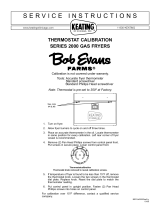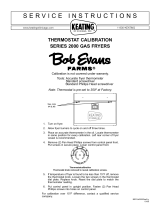
TO THE PURCHASER, OWNER AND STORE MANAGER
Please review these warnings prior to posting them in a prominent location for reference.
L20-303 Rev 1. (05/11)
2
WARNING
DO NOT store or use gasoline or other flammable
vapors and liquids in the vicinity of this or any other
appliance.
WARNING
Improper installation, alteration, service or
maintenance can cause property damage, injury or
death. Read the installation, operating and
maintenance instructions thoroughly before installing
or servicing this appliance.
WARNING
Installation, maintenance and repairs should be
performed by a Pitco Authorized Service and Parts
(ASAP) company technician or other qualified
personnel. Installation, maintenance or repairs by
unauthorized and unqualified personnel will void the
warranty.
WARNING
Installation and all connections must be made
according to national and local regulations and codes
in force.
WARNING
A country approved all pole circuit breaker with a
minimum open contact gap of 3mm must be used for
proper installation. (CE countries)
WARNING
During the warranty period if a customer elects to use a
non-original part or modifies an original part purchased
from Pitco and/or its Authorized Service and Parts
(ASAP) companies, this warranty will be void. In
addition, Pitco and its affiliates will not be liable for any
claims, damages or expenses incurred by the customer
which arises directly or indirectly, in whole or in part,
due to the installation of any modified part and/or
received from an unauthorized service center.
WARNING
This appliance, when installed, must be electrically
grounded in accordance with local codes, or in the
absence of local codes, with the National Electrical
Code, ANSI/NFPA 70, or the Canadian Electrical Code,
CSA C22.2, as applicable.
WARNING
DO NOT alter or remove structural material on the
appliance to facilitate storage or for any other reason.
WARNING
This appliance is intended for professional use only
and should be operated by fully trained and qualified
personnel.
WARNING
DO NOT use the electrical cord as a leash to move the
appliance. Series injury and appliance damage can
occur.
WARNING
If the supplied power cord or receptacle is damaged, it
must be replaced by a Pitco Authorized Service and
Parts (ASAP) company technician, or a similarly
qualified person in order to avoid a hazard.
WARNING
The power supply must be disconnected before
servicing, maintaining or cleaning this appliance.
WARNING
The appliance is NOT jet stream approved. DO NOT
clean the appliance with a water jet.
WARNING
DO NOT attempt to move this appliance or transfer hot
liquids from one container to another when the unit is
at operating temperature or filled with hot liquids.
Serious personal injury could result if skin comes in
contact with the hot surfaces or liquids.
WARNING
DO NOT sit or stand on this appliance. The appliance’s
top panel, filter pan, filter carriage, pan cover is not a
step. Serious injury could result from slipping, falling
or contact with hot liquids.
WARNING
NEVER use the appliance as a step for cleaning or
accessing the ventilation hood. Serious injury could
result from slips, trips or from contacting hot liquids.
WARNING
The filter pan should be dry and free of water droplets
prior to use. Serious injury could result from hot steam
vapors when hot oil/shortening mixes with water.
WARNING
DO NOT overfill filter pan with hot oil/shortening. Do
not leave appliance unattended while draining or
refilling with oil/shortening. Over filling the appliance
can cause serious injuries and damage the appliance.
WARNING
The contents of the crumb catch and/or filter pan of
any filter system must be emptied into a fireproof
container at the end of each day. Some food particles
can spontaneously combust if left soaking in certain
types of oil or shortening.
WARNING
Completely shut the appliance down when the
oil/shortening is being drained from the appliance. This
will prevent the appliance from heating up during the
draining and filling process. Serious injury and
appliance damage can occur.
WARNING
This appliance is intended for indoor use only.
WARNING
DO NOT operate appliance unless all panels and
access covers are attached correctly.
WARNING
It is recommended that this appliance be inspected by
a qualified service technician for proper performance
and operation on a yearly basis
WARNING
This appliance is designed to operate on a specific
voltage. This information can be found on the data
plate located on the rear of the appliance
.





















